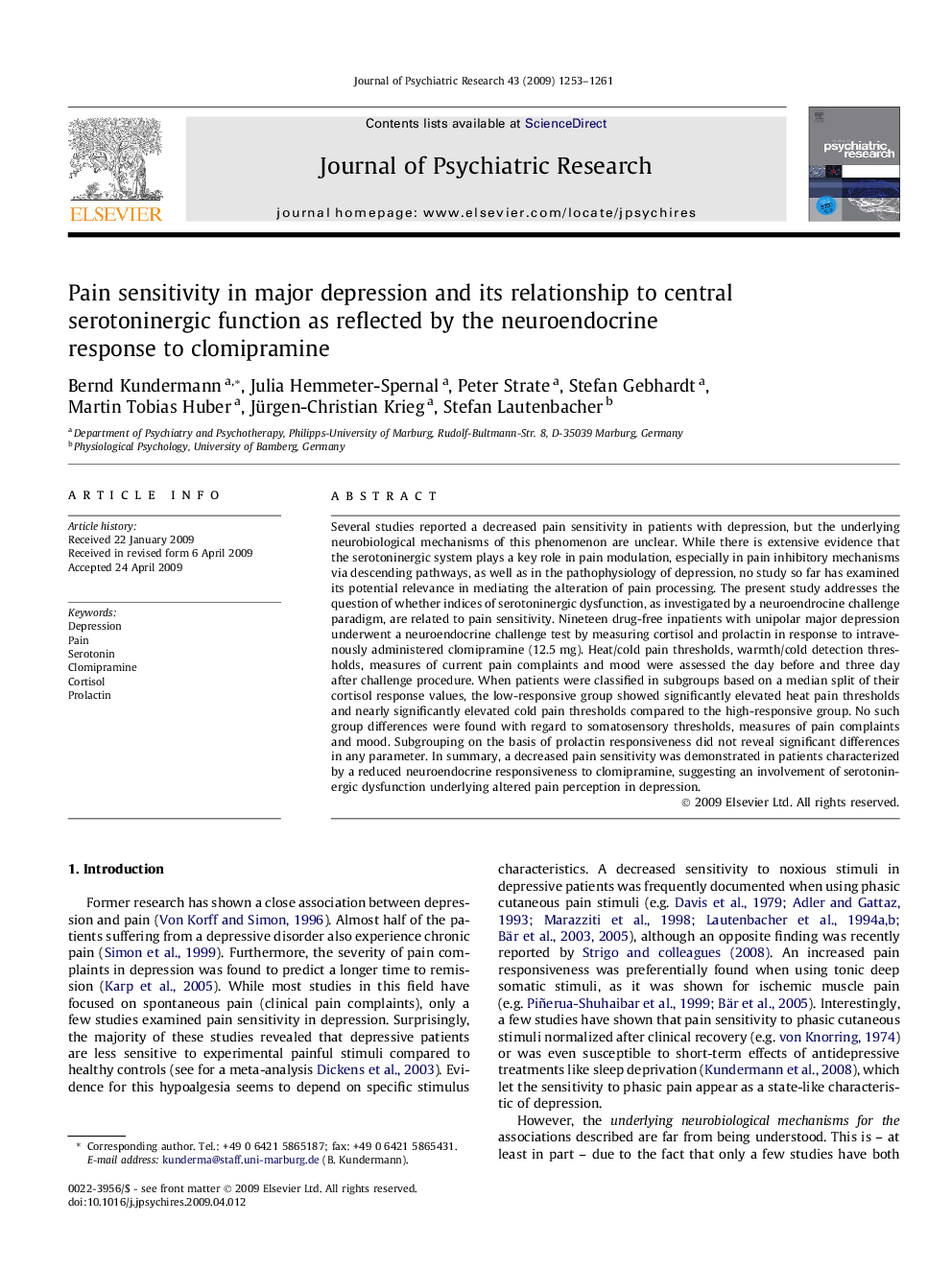| Article ID | Journal | Published Year | Pages | File Type |
|---|---|---|---|---|
| 10302328 | Journal of Psychiatric Research | 2009 | 9 Pages |
Abstract
Several studies reported a decreased pain sensitivity in patients with depression, but the underlying neurobiological mechanisms of this phenomenon are unclear. While there is extensive evidence that the serotoninergic system plays a key role in pain modulation, especially in pain inhibitory mechanisms via descending pathways, as well as in the pathophysiology of depression, no study so far has examined its potential relevance in mediating the alteration of pain processing. The present study addresses the question of whether indices of serotoninergic dysfunction, as investigated by a neuroendrocine challenge paradigm, are related to pain sensitivity. Nineteen drug-free inpatients with unipolar major depression underwent a neuroendocrine challenge test by measuring cortisol and prolactin in response to intravenously administered clomipramine (12.5Â mg). Heat/cold pain thresholds, warmth/cold detection thresholds, measures of current pain complaints and mood were assessed the day before and three day after challenge procedure. When patients were classified in subgroups based on a median split of their cortisol response values, the low-responsive group showed significantly elevated heat pain thresholds and nearly significantly elevated cold pain thresholds compared to the high-responsive group. No such group differences were found with regard to somatosensory thresholds, measures of pain complaints and mood. Subgrouping on the basis of prolactin responsiveness did not reveal significant differences in any parameter. In summary, a decreased pain sensitivity was demonstrated in patients characterized by a reduced neuroendocrine responsiveness to clomipramine, suggesting an involvement of serotoninergic dysfunction underlying altered pain perception in depression.
Related Topics
Life Sciences
Neuroscience
Biological Psychiatry
Authors
Bernd Kundermann, Julia Hemmeter-Spernal, Peter Strate, Stefan Gebhardt, Martin Tobias Huber, Jürgen-Christian Krieg, Stefan Lautenbacher,
